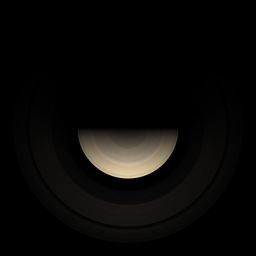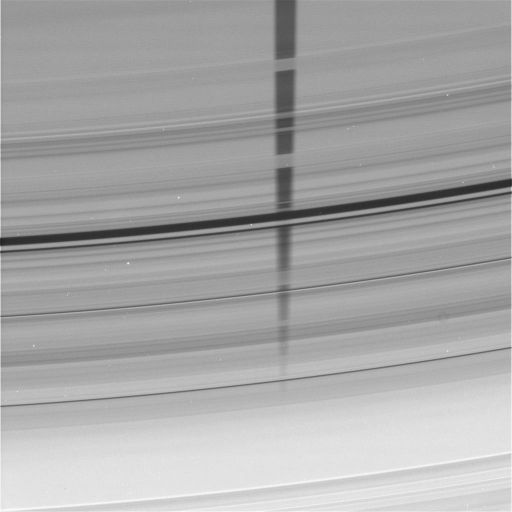Emily Lakdawalla • Aug 10, 2009
Saturn's equinox: Saturnshine and moon shadows
Light bounces around the Saturn system in strange ways. The Sun is the only light source, but incoming sunlight strikes Saturn and its rings and its moons and bounces off to illuminate areas of Saturn and its rings and its moons that would otherwise be dark. In particular, Saturnshine and ringshine have been useful to Cassini's efforts to image areas of moons that would otherwise have been in the dark.
Here's a nice color image captured during Cassini's prime mission to Saturn that illustrates how much ringshine was bouncing around the Saturn system then. Anyone floating among Saturn's cloud tops during the night on Saturn would be dazzled by the arc of brilliant rings overhead, and would surely have enough light to see by. (This is one of many spectacular color composites of Cassini images produced by Gordan Ugarkovic.)
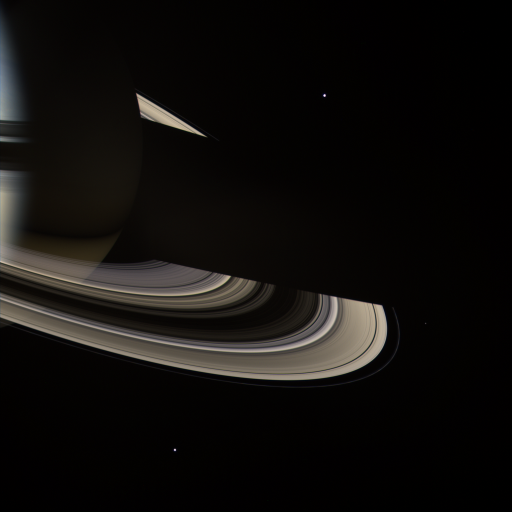
NASA / JPL / SSI / Gordan Ugarkovic
The 'dark side' of Saturn
This approximate true color view of the night side of Saturn was captured by Cassini on May 19, 2007. It shows how Saturn's night side is brightly illuminated by reflected light from Saturn's rings. Sunlight is incident on the south (bottom) side of the rings, so the strongest illumination from ringshine is on the southern hemisphere of Saturn. The reflection goes to a minimum near the equator, where the effective area of the rings goes to zero (because they are so thin). There is also weaker ringshine lightening the northern hemisphere night side because the rings are partially transparent; light there has been scattered through the rings and bounces northward to Saturn. At the extreme left of the image daylight is illuminating Saturn's globe, and the rings casting shadows onto its blue northern hemisphere. Three moons are visible in this view: clockwise from the top, they are Enceladus, Epimetheus, and Mimas.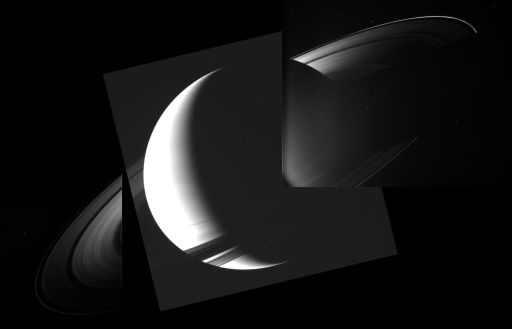
NASA / JPL / SSI / kludgy mosaic by Emily Lakdawalla
Saturnshine on the rings near equinox
Three images from Cassini's raw images website illustrate how Saturnshine was the brightest light source on the rings just a few days before equinox. The three images were taken on August 4, 2009, from a distance of about 2.2 million kilometers and on the night side of Saturn, north of the ring plane. The two frames taken of the rings clearly show that they are brightest where Saturnlight is reflected onto them. In the center frame, the rings cast almost no shadow onto the planet -- their shadow is the thinnest of dark lines near the equator. Oddly, the outer F ring is the brightest of all, because its sparse particles are forward-scattering light to Cassini's cameras.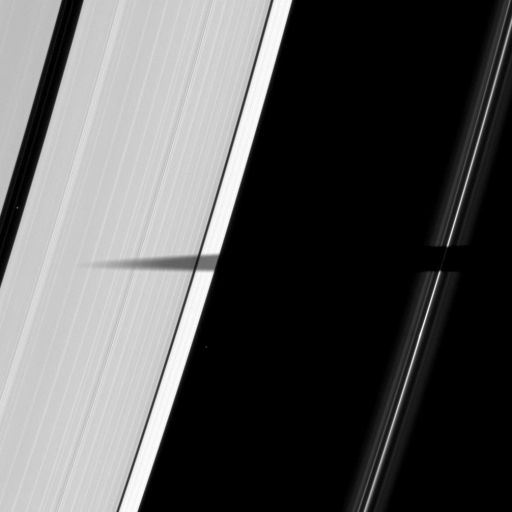
NASA / JPL / SSI
Mimas' shadow crosses the rings
As Saturn approached its August 11, 2009 equinox, the moons cast shadows onto the rings. This shadow is of Mimas, captured by Cassini on April 7, 2009. The shadow crosses the F ring (right) and the outer half of the A ring including the Keeler gap (center). The shadow is not completely black because Saturnlight is illuminating the areas shadowed by Mimas.If you couldn't follow that, don't worry. Just look at the photo and allow yourself to be amazed. Sometimes I find myself thinking too much and have to exert effort to step back and just be amazed by what we're seeing.
Here's one last amazing pic, on the topic of Saturnshine and moon shadows.
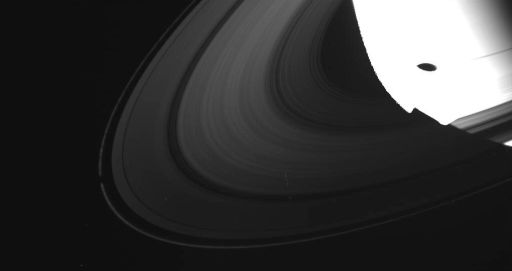
NASA / JPL / SSI
Titan's shadow on Saturn near equinox
This photo was taken by Cassini on August 4, 2009, just a week before Saturn's equinox. Sunlight strikes Saturn's rings almost perfectly edge-on, making their shadow on Saturn an incredibly thin line along the equator. The rings are dark, illuminated almost only by light reflected off of Saturn, except for the F ring, whose dusty particles scatter light to Cassini's cameras. The shadow of Titan crosses the rings and forms a dark blob on Saturn's equator. Because the rings are lit by Saturnshine, not sunshine, Titan's shadow isn't visible on the ring system except where it crosses the F ring, which is lit up by sunlight. A relatively long exposure was required to capture detail in the rings, so Saturn's sunlit areas are overexposed; some "pixel bleeding" results from the overexposure.Let’s Go Beyond The Horizon
Every success in space exploration is the result of the community of space enthusiasts, like you, who believe it is important. You can help usher in the next great era of space exploration with your gift today.
Donate Today

 Explore Worlds
Explore Worlds Find Life
Find Life Defend Earth
Defend Earth


